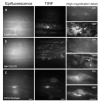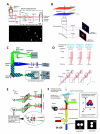Single cell optical imaging and spectroscopy
- PMID: 23410134
- PMCID: PMC3624028
- DOI: 10.1021/cr300336e
Single cell optical imaging and spectroscopy
Figures





















References
-
- Hooke R, Micrographia Or. Some Physiological Descriptions of Minute Bodies Made by Magnifying Glasses, with Observations and Inquiries Thereupon: By Robert Hooke ; with a Preface by R.T. Gunther. Dover Publications; New York: 2003.
-
- Chou LYT, Ming K. Chem. Soc. Rev. 2011;40:233. - PubMed
-
- Delehanty J, Mattoussi H, Medintz I. Anal. Bioanal. Chem. 2009;393:1091. - PubMed
Publication types
MeSH terms
Substances
Grants and funding
LinkOut - more resources
Full Text Sources
Other Literature Sources

